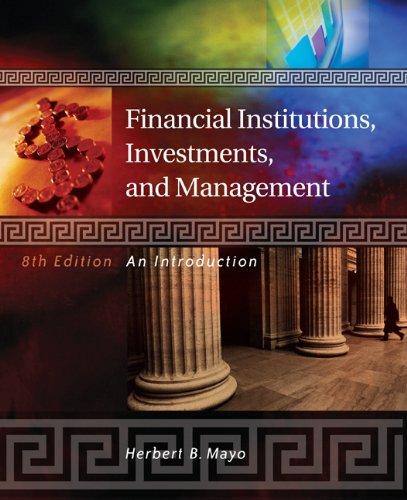Question
Two all-equity firms A and T are producing the same product. Firm A produces 100,000 units every year at a cost of $10 per unit.
Two all-equity firms A and T are producing the same product. Firm A produces 100,000 units every year at a cost of $10 per unit. Firm T produces 250,000 units every year at a cost of $7 per unit. Both firms sell their products at a price of $15 per unit. In addition to production costs, Firm A has annual general costs of $100,000, and Firm T has annual general costs of $200,000. The tax rate is 30%. Assume that the cash flows described above are expected to be generated every year, starting
next year, and that the firms have no other assets, liabilities, or cash flows. The required return is 10%.
If both firms merge into one firm, the combined firm will benefit from a greater market power. Thus, it will increase the price per unit to $20. At this price, however, it will have the same annual revenues as the sum of revenues of A and T when they were separated. The combined firm will also benefit from economies of scale, and thus the production cost will decrease to $6 per unit, and the general costs will be $250,000 every year. Finally, the combined firm will be able to hold perpetual debt at the amount of its annual revenues.
a) Calculate the equity values of Firm A and Firm T as standalone firms, and the equity value of the combined firm. Describe the sources of gains from the merger.
b) Suppose that Firm A has 250,000 shares and Firm T has 4,750,000 shares. Firm A intends to buy Firm T in a stock-based acquisition. In particular, Firm A will issue new shares and give them to the shareholders of Firm T in exchange for their old shares in Firm T. Define the exchange ratio as the number of new shares in the combined firm to be issued for each of Firm Ts existing shares. Calculate the maximum exchange ratio that Firm As shareholders will be willing to accept, and the minimum exchange ratio that Firm Ts shareholders will be willing to accept.
c) Now, suppose that Firm A has 50,000 warrants, each warrant provides the right to buy 1 share at an exercise price of $5? The warrants are expected to be exercised whether Firm A acquires Firm T or not (in case Firm A acquires Firm T, the warrants will be exercised before the acquisition). How will your answer to Part b change in light of this new information?
Step by Step Solution
There are 3 Steps involved in it
Step: 1

Get Instant Access to Expert-Tailored Solutions
See step-by-step solutions with expert insights and AI powered tools for academic success
Step: 2

Step: 3

Ace Your Homework with AI
Get the answers you need in no time with our AI-driven, step-by-step assistance
Get Started


